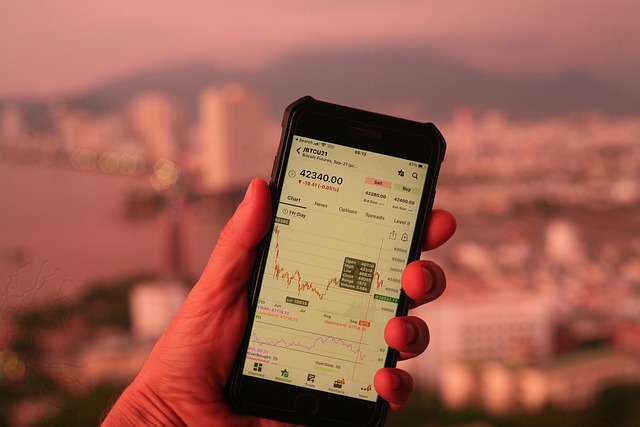Advanced Crypto Futures Trading Strategies for 2025
Author: Jameson Richman Expert
Published On: 2025-11-09
Prepared by Jameson Richman and our team of experts with over a decade of experience in cryptocurrency and digital asset analysis. Learn more about us.
Crypto futures trading strategies can unlock leverage, hedging and shorting opportunities unavailable in spot markets — but they also introduce higher risk. This article walks through the most effective crypto futures trading strategies, explains key concepts (perpetuals, funding rates, margin and liquidation), provides actionable setups and examples, and shows how to backtest and manage risk so you can trade responsibly and systematically.

What are crypto futures and why trade them?
Crypto futures are derivative contracts that let traders speculate on the future price of cryptocurrencies without necessarily owning the underlying asset. There are two common types: traditional futures with fixed expiry dates and perpetual contracts that have no expiry and use funding rates to anchor price to spot. For a general overview of futures contracts, see the Wikipedia entry on futures contracts for background and definitions.
Trading futures allows:
- Leverage — amplify returns (and losses).
- Shorting — profit when prices fall.
- Hedging — manage spot exposure.
- Arbitrage & tactical strategies using funding rates and spreads.
Key terms every futures trader must know
- Leverage — ratio of position exposure to margin posted.
- Initial margin / maintenance margin — capital required to open and keep positions.
- Liquidation price — price at which exchange closes your position to prevent negative balance.
- Funding rate — periodic payments between longs and shorts on perpetual contracts.
- Mark price — fair-value price used to calculate P&L and prevent manipulative liquidations.
- Order types — market, limit, stop-limit, take-profit, trailing stop, reduce-only.
Regulatory and market information about derivatives and leverage can be found at the U.S. Commodity Futures Trading Commission (CFTC) and through exchange documentation — always read platform risk disclosures.
Choose the right exchange and understand fees
Exchange choice affects liquidity, fees, available pairs and safety. Popular futures platforms include Binance, MEXC, Bitget and Bybit — each with different fee structures, margin models and product offerings. Open accounts on reputable platforms using the links below if you want to get started quickly (these are exchange registration links):
Fees can materially impact profitability for high-frequency strategies. Read a complete breakdown of trading fees and savings (including spot vs derivatives comparisons) at this detailed guide on eToro trading fees to understand fee structures generally and learn how to reduce costs. If you are new to a specific exchange, start with a beginner’s platform guide — for example, this Binance trading guide for beginners provides a step-by-step on account setup, order types and safety best practices.

How to approach strategy selection (framework)
Before choosing a strategy, answer these questions:
- Timeframe — scalping, intraday, swing or position?
- Market regime — trending, range-bound, volatile?
- Risk tolerance — maximum drawdown you can accept.
- Edge & repeatability — can you define clear entry, exit and risk rules?
Use quantitative backtesting and demo/futures-testnet accounts to validate any approach before risking real capital. Keep a trade journal to track performance metrics (win rate, average R, consecutive drawdown). If you use signals, evaluate them carefully — this article on best free bitcoin signals Telegram explains how to vet signal providers and what red flags to avoid.
High-probability crypto futures trading strategies
Below are practical strategies with entry/exit rules, risk controls and examples.
1) Trend-following (momentum) strategy
Overview: Ride sustained price moves using moving averages, ADX or trend-confirmation indicators.
- Timeframe: 1h, 4h, daily for most crypto pairs.
- Indicators: 20-50 EMA cross, ADX > 25, MACD confirmation.
- Entry: Price closes above 20 EMA and 50 EMA with ADX rising; enter on pullback to EMA or break of consolidation.
- Exit: Trailing stop below the 20 EMA or fixed risk-reward (e.g., 1R to 3R) and/or when trend indicators reverse.
- Leverage: Moderate (2x–5x) to manage liquidation risk.
Example: BTC perpetual trading at $50,000. Account size $10,000, risk per trade 1% ($100). Stop set at 3% below entry ($48,500), so risk per BTC unit is $1,500. Position size = $100 / $1,500 = 0.0667 BTC. At 3x leverage, required margin ~ 0.0222 BTC equivalent. Adjust for contract specs and fees.
2) Range trading (mean reversion)
Overview: In range-bound markets, buy near support and sell near resistance using oscillators like RSI/Stochastic.
- Timeframe: 5m–1h for intraday; 4h for wider ranges.
- Indicators: RSI (14) oversold/overbought, Bollinger Bands, VWAP.
- Entry: Price touches lower Bollinger Band or RSI < 30 near historical support. Enter long with stop below support.
- Exit: Near midline or resistance; use tight stop-loss and low leverage.
- Leverage: Low (1x–3x) because mean reversion can fail in breakouts.
Risk note: Range trading fails during breakouts — always use stop-loss and monitor volatility expansion.
3) Breakout strategy
Overview: Capture momentum when price breaks key resistance/support or consolidations.
- Timeframe: 5m–4h depending on breakout size.
- Indicators: Volume spike confirmation, breakout above consolidation high, vpVR/market profile for structure.
- Entry: On candle close above resistance with volume > average; consider retest entry if you prefer safer entry.
- Exit: Predefine targets using measured move (height of range) and protect with a stop below breakout level.
- Leverage: Moderate; increases with confidence and liquidity.
Example: ETH forms a range 1,800–2,000 USD (height 200). Breakout at 2,020 with volume surge. Measured target = 2,220 (2,020 + 200). Use stop just below breakout retest at 1,980.
4) Scalping
Overview: Seek small, frequent profits using high liquidity tickers and tight stops.
- Timeframe: 1m–5m charts.
- Indicators: Order flow, depth, VWAP, fast EMAs and support-resistance levels.
- Entry/Exit: Quick entries capturing 0.1–0.5% moves; exit on small target or reversal signal.
- Leverage: Often higher (5x–20x) because target per trade is small; ensure very strict risk per trade and low fees.
Note: Scalping requires low latency, fast executions, and fee-efficient pricing. Consider maker-taker fees and rebates. If fees are a concern, review platform fee structures — this breakdown on trading fees explains where costs come from and how to save.
5) Funding rate arbitrage (carry trade)
Overview: Perpetual contracts have funding payments exchanged between longs and shorts to keep perpetual price aligned with spot. When funding is consistently positive, shorts earn funding; when negative, longs earn. Traders can capture yields by hedging spot exposure and taking the opposite perpetual position.
- Mechanics: Buy spot asset and short perpetual contract to lock exposure and collect funding when funding is positive for shorts.
- Key risk: Basis and liquidation risk on perpetual. Funding rates can flip; consider dynamic sizing.
- Example: If BTC perpetual pays 0.02% every 8 hours to shorts, holding a short perpetual while long spot can generate ~0.06% daily before fees.
Execution tip: Use exchanges with low funding volatility and sufficient liquidity. Carefully calculate net funding after fees. Funding arbitrage is most effective in large-cap, liquid markets where spread and slippage are low.
6) Calendar spreads and basis trading
Overview: Exploit price differences between futures contracts of different expiries or between futures and spot (basis). This is a lower-risk relative-value strategy compared to directional trading.
- Setup: Long nearby contract, short further-dated contract (or vice versa) to capture convergence or persistent basis.
- Risk: Rollover, liquidity, and margin correlation. Spread can widen against you.
- Example: If the front-month BTC future trades at a discount to spot (contango/backwardation), structure spread to profit as spread reverts.
7) Delta-neutral / market-making & grid trading
Overview: Use grid orders or market-making strategies to profit from volatility without directional exposure. Keep delta hedged and collect spread between buys and sells.
- Requirements: Capital, APIs for automation, robust risk controls and continuous hedging.
- Example: Place buy orders every 1% below and sell orders every 1% above current price; hedge net delta with futures to keep position neutral.
- Risk: Whale moves and funding costs; systems must manage inventory and exposures.
8) Statistical arbitrage and algorithmic strategies
Overview: Use quantitative models (cointegration, mean-reverting pairs, machine learning) to find short-term edges. These require backtesting, data pipelines and proper risk controls.
- Metrics to track: Sharpe ratio, Sortino, max drawdown, profit factor, average trade length.
- Tools: Python (Pandas, Zipline, Backtrader), TradingView for signal generation, exchange APIs for execution.
Position sizing & risk management (practical formulas)
Proper position sizing is the single most important factor in long-term survival.
Use a simple rule-based approach:
- Risk per trade (dollars) = Account size × Risk % (e.g., 1%).
- Position size (contracts/units) = Risk per trade / (Entry price − Stop price).
- Adjust for leverage = Position notional / leverage; ensure margin available covers maintenance margin and possible adverse moves.
Example calculation:
- Account size = $20,000, risk per trade = 1% = $200.
- Entry for BTC = $60,000, stop at $58,200 (3% risk). Risk per BTC = $1,800.
- Position size = $200 / $1,800 = 0.1111 BTC (notional = 0.1111 × $60,000 = $6,666).
- If using 5x leverage, margin required = $6,666 / 5 = $1,333, which must exceed initial margin.
Always account for taker/maker fees and funding costs when sizing positions — small fees compound over many trades and can turn positive expectancy strategies into losers if ignored.

Liquidation math (how exchanges determine the liquidation price)
Liquidation price formulas vary by exchange and by isolated vs cross margin. Generally:
- Liquidation occurs when your margin balance falls below maintenance margin; exchanges compute this based on position notional, entry price, leverage and fees.
- To estimate liquidation price, use the exchange’s liquidation calculator or derive from:
Liquidation ≈ Entry × (1 ± (Initial margin − Maintenance margin − Fees) / Position notional)
Because formulas differ and insurance/auto-deleveraging systems can affect outcomes, always test your expected liquidation price on a platform demo and avoid excessive leverage.
Backtesting, forward testing and metrics that matter
Backtest every strategy over multiple market regimes (bull, bear, sideways). Key metrics:
- Net profit and annualized return
- Win rate and average win/loss
- Profit factor (gross profit / gross loss)
- Max drawdown and recovery time
- Sharpe and Sortino ratios
- Average trade duration and exposure time
Forward-test in a demo or with small capital before increasing size. Control overfitting by using out-of-sample testing and walk-forward analysis. Use portfolio-level testing if you run multiple strategies concurrently to understand aggregate exposure and correlation.
Practical trading plan template (use this before each trade)
- Market & timeframe: e.g., BTC/USDT, 4h
- Thesis: Why I expect the price to move (trend, breakout, seasonality)
- Entry rules: Exact entry trigger and conditions
- Position sizing: Account size, risk percent, leverage
- Stop-loss: Exact price and rationale
- Targets: Exit plan(s) and trailing stop logic
- Risk management: Max concurrent trades, total leverage cap
- Post-trade review: What to record and metrics to track

Fees, slippage and order execution best practices
Execution matters. Use limit orders to control slippage when possible. For large size, use TWAP/VWAP algorithms or break orders into smaller slices. Consider maker fee rebates if you provide liquidity frequently; for scalpers and high-frequency setups, fee structure can determine profitability.
For more detail on how fees impact trading and ways to save, review the in-depth fee breakdown and savings strategies in this eToro trading fees guide. Also, if you are new to an exchange, this Binance trading guide for beginners covers order types and execution that reduce slippage and improve outcomes.
Leveraging third-party signals and automation (caution)
Signal services and Telegram groups can offer research and trade ideas, but many are low-quality or biased. Use these resources sparingly and always validate signals with your own analysis. If you want to understand how to choose reliable signal sources, this article on best free Bitcoin signals Telegram explains evaluation criteria and warning signs.
If you choose to automate:
- Use APIs securely and rotate keys.
- Implement circuit breakers and maximum loss limits.
- Test strategies thoroughly on sandbox/testnet accounts before live deployment.
Psychology, discipline and continuing improvement
Good strategies fail without discipline. Maintain a trading journal recording:
- Market context and your thesis
- Entry/exit times and prices
- Emotional state and deviations from plan
- Post-trade analysis and learnings
Review monthly and refine rules that consistently fail. Avoid revenge trading, overtrading, and increasing position size after wins without adjusting risk controls.

Advanced considerations
- Portfolio diversification — don’t concentrate only on one coin or strategy; consider multiple non-correlated strategies.
- Tax and regulatory compliance — document trades for your jurisdiction and consult a tax professional.
- Counterparty and custody risk — keep only working capital on exchange wallets; consider institutional custody for large balances.
- Stress testing — model extreme moves to see how margin calls and correlated liquidations could affect the account.
Resources and tools
Useful resources to learn and implement futures strategies:
- Futures & derivatives primer — Wikipedia: Futures contract
- Regulatory guidance on leveraged trading — CFTC
- Statistical metrics & finance concepts — Wikipedia: Sharpe ratio
- Exchange guides and fee breakdowns — read platform help centers and articles such as the Binance trading guide for beginners and the eToro fee breakdown linked above.
- Open-source tools — Python (Pandas, NumPy), Backtrader, CCXT for exchange APIs; TradingView for charting & script testing.
Choosing the right platform for your strategy
Different strategies benefit from different platform features:
- High-frequency & scalping: choose low-latency, low-fee exchanges with tight spreads.
- Funding arbitrage: choose platforms with reliable funding history and deep liquidity.
- Algo and API-based trading: verify API limits, websockets & historical data access.
If you are ready to open accounts, here are links to popular derivatives exchanges:

Checklist before risking real capital
- Backtest strategy across market regimes and forward-test on demo.
- Define precise entry/exit and risk rules — code them if automated.
- Confirm exchange fees, funding schedules and margin rules for target pairs.
- Test order execution and slippage on small size.
- Maintain stop-loss discipline and position-size limits.
- Keep an emergency plan: how to reduce risk if market stress spikes.
Conclusion — trade with an edge and preserve capital
Crypto futures trading strategies can be powerful tools for generating returns, hedging and arbitrage — but leverage magnifies both gains and losses. Successful traders focus on repeatable edges, robust risk management, rigorous testing and disciplined execution. Use the strategy templates above as starting points, adapt them to your time horizon and risk profile, and always control position sizing to preserve capital.
For step-by-step help with exchange onboarding and execution, check the Binance trading guide for beginners. To understand how fees affect your returns and where to save, see the full fee breakdown guide. If you use external trade signals, refer to the guide on choosing reliable Bitcoin Signal Telegram groups before following any paid or free tips.
Disclaimer: This article is for educational purposes only and is not financial advice. Futures trading involves substantial risk and can result in loss of capital. Consult a qualified financial advisor and test strategies thoroughly before trading with real funds.